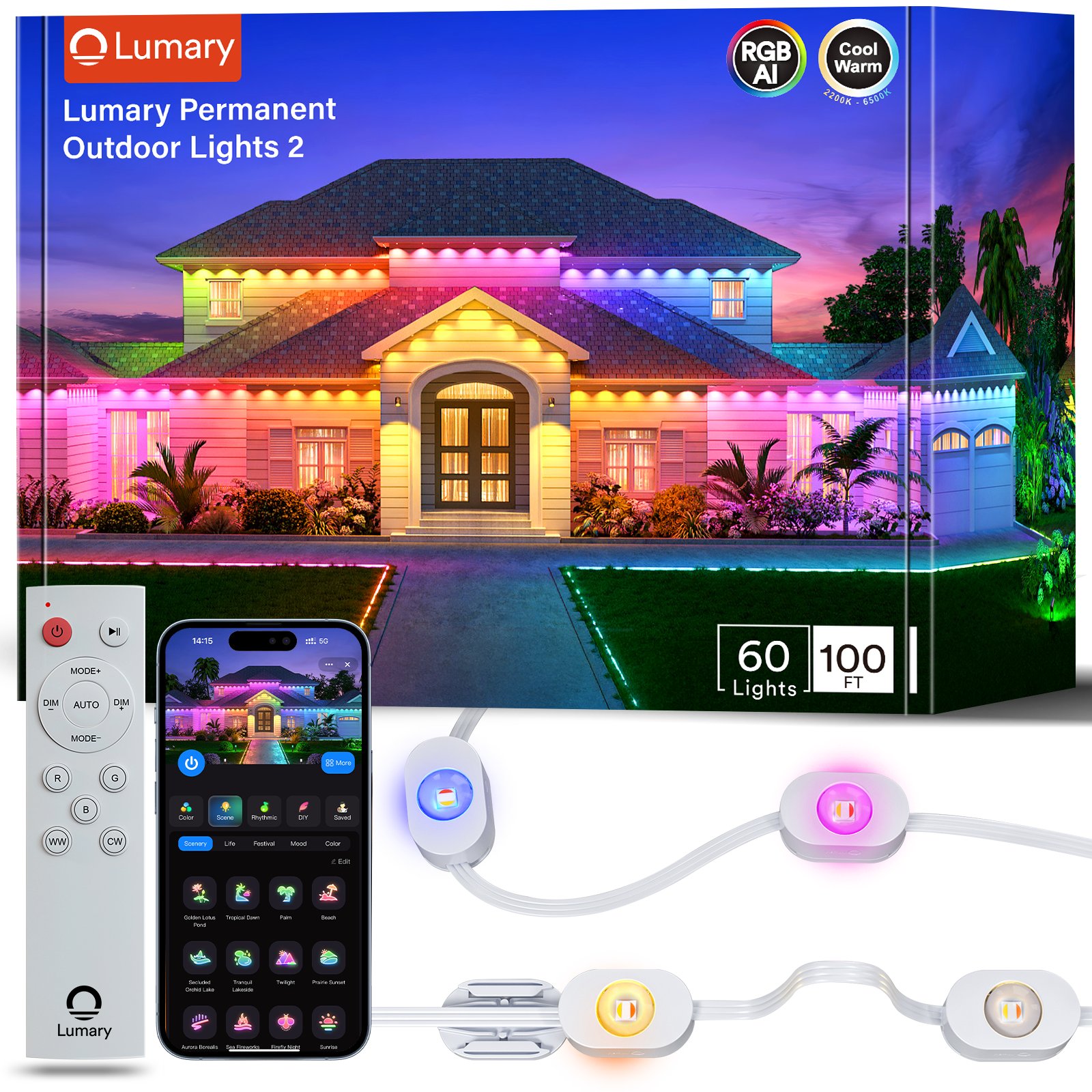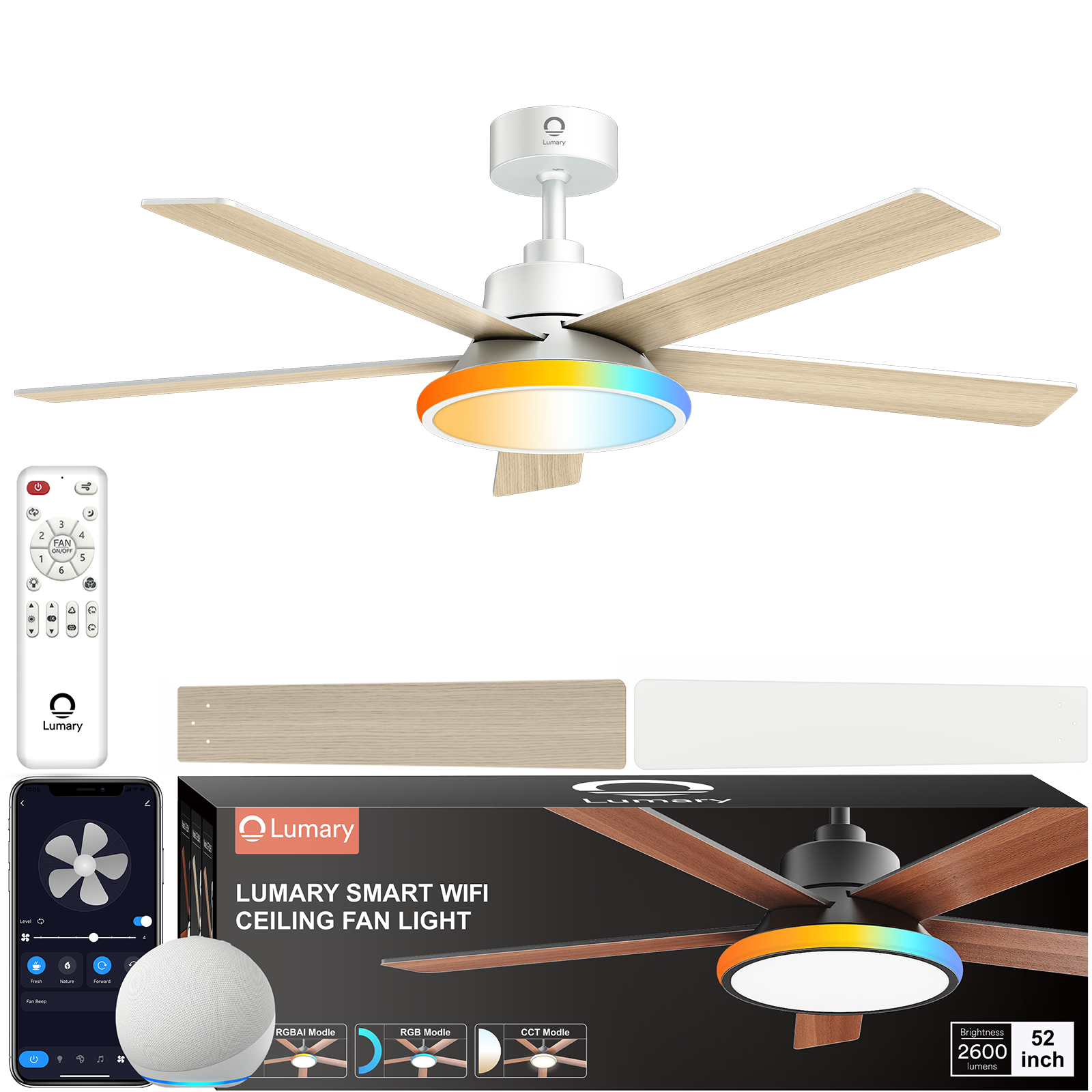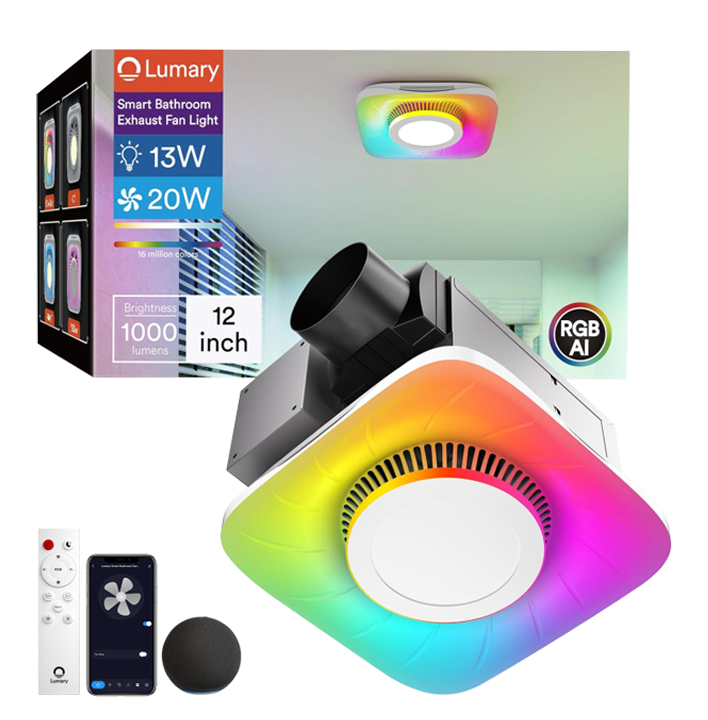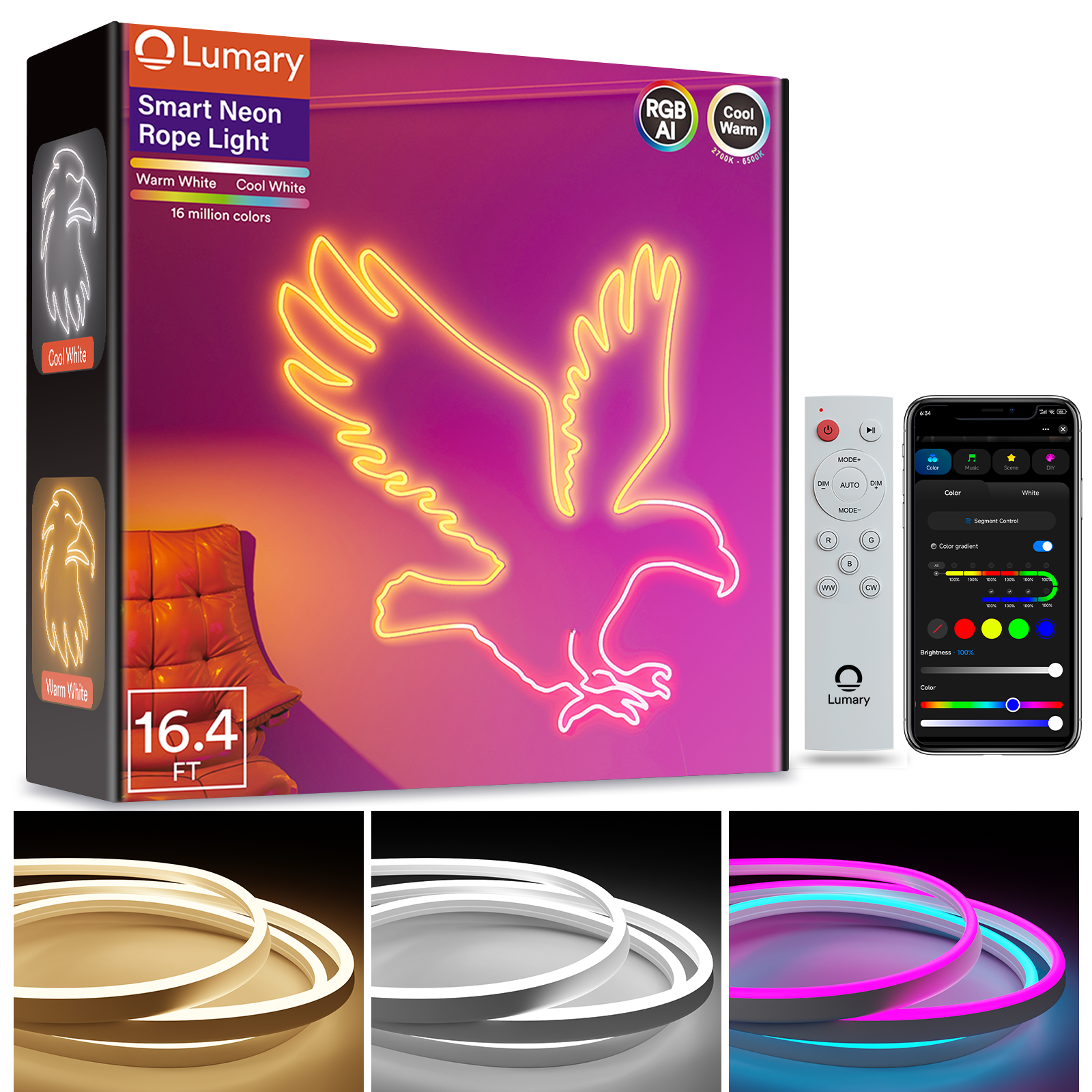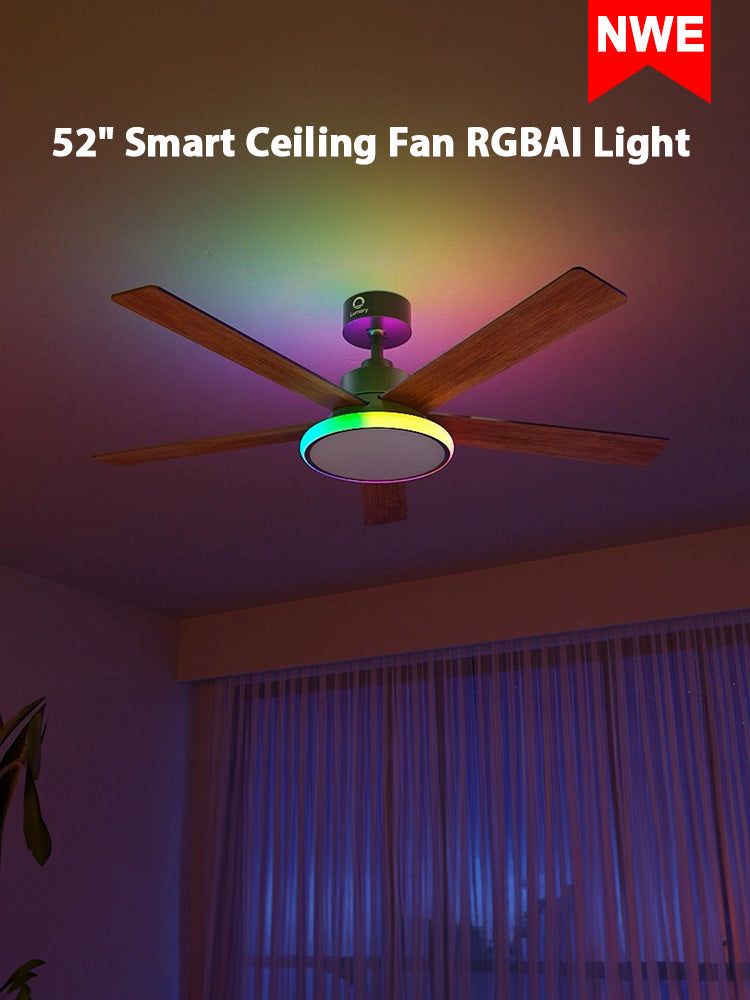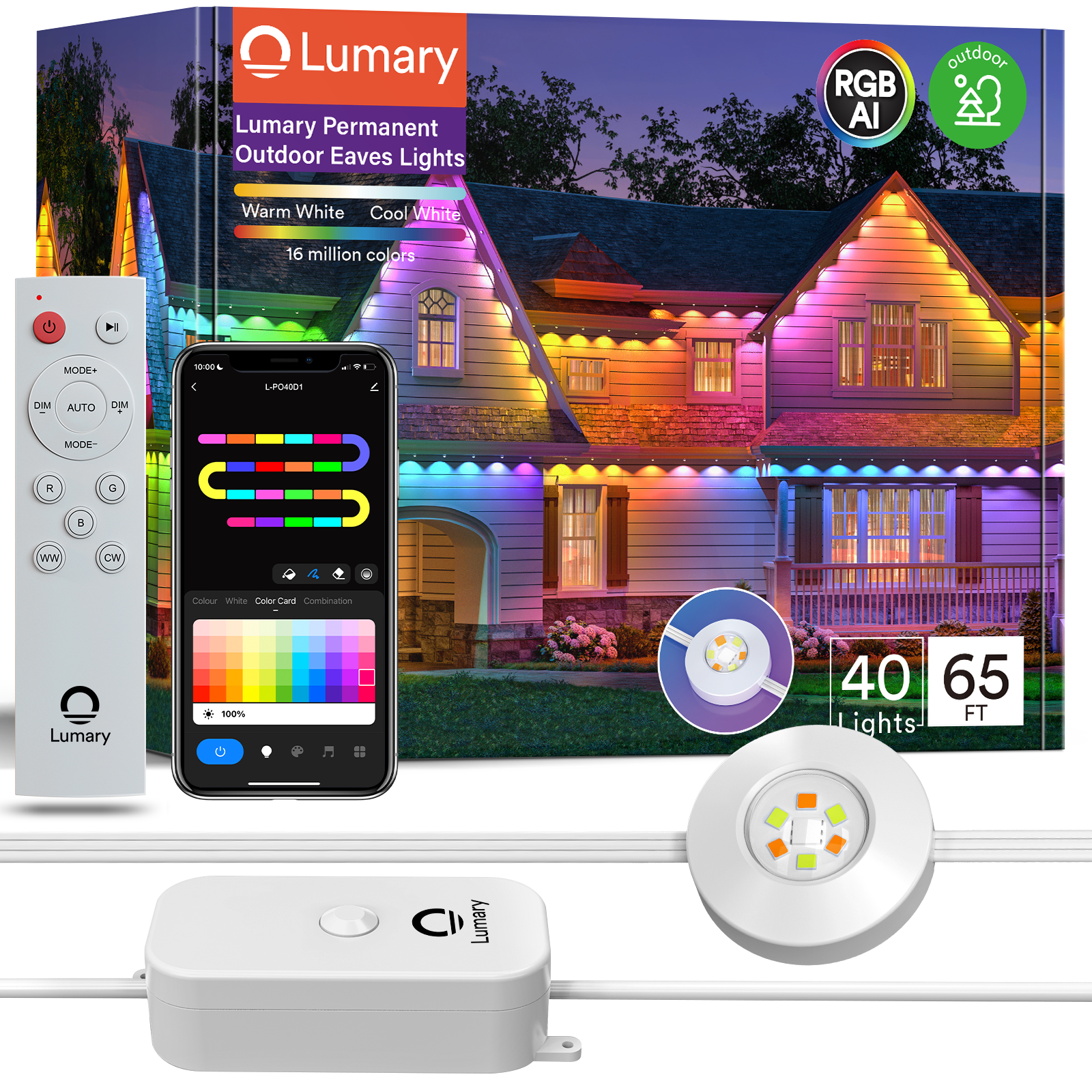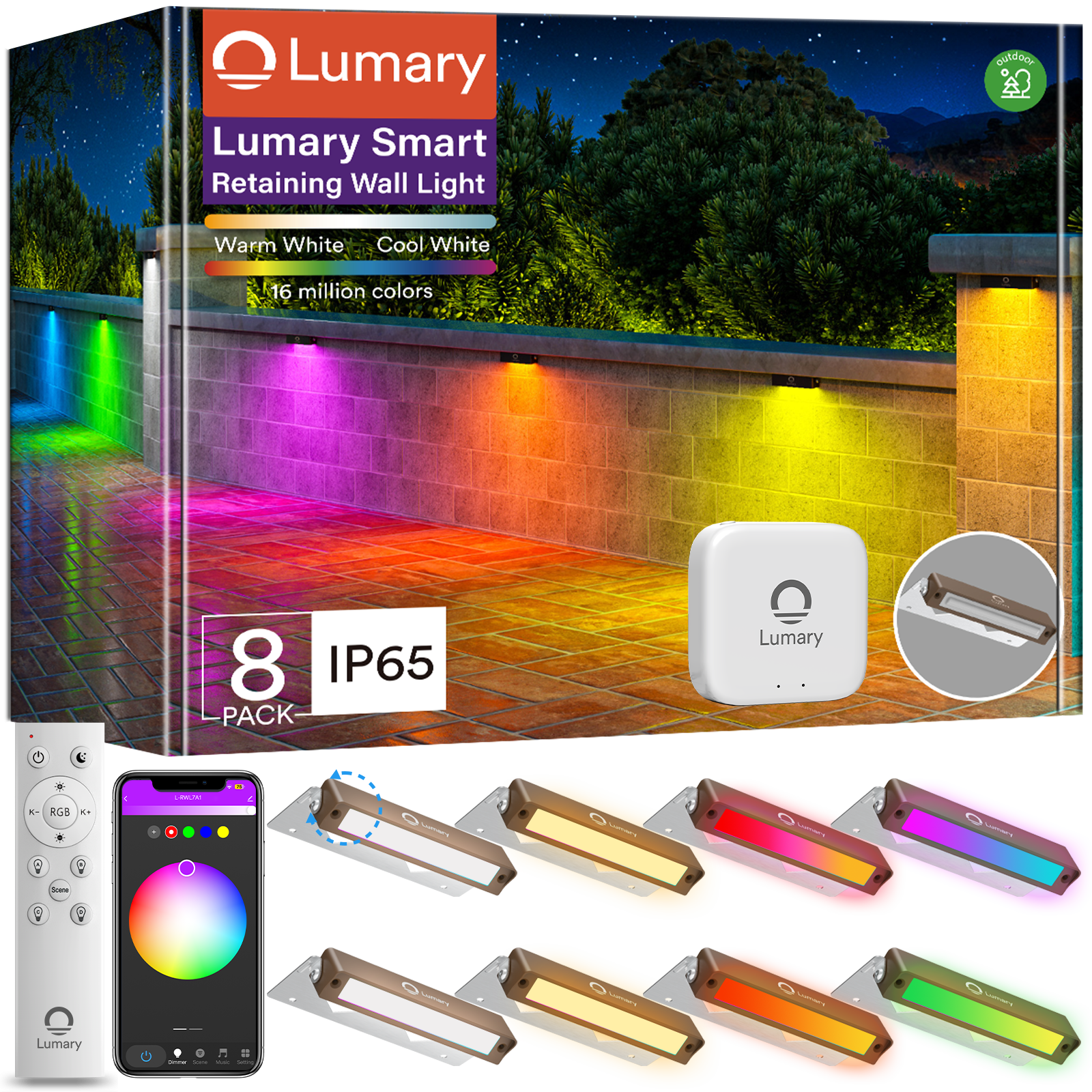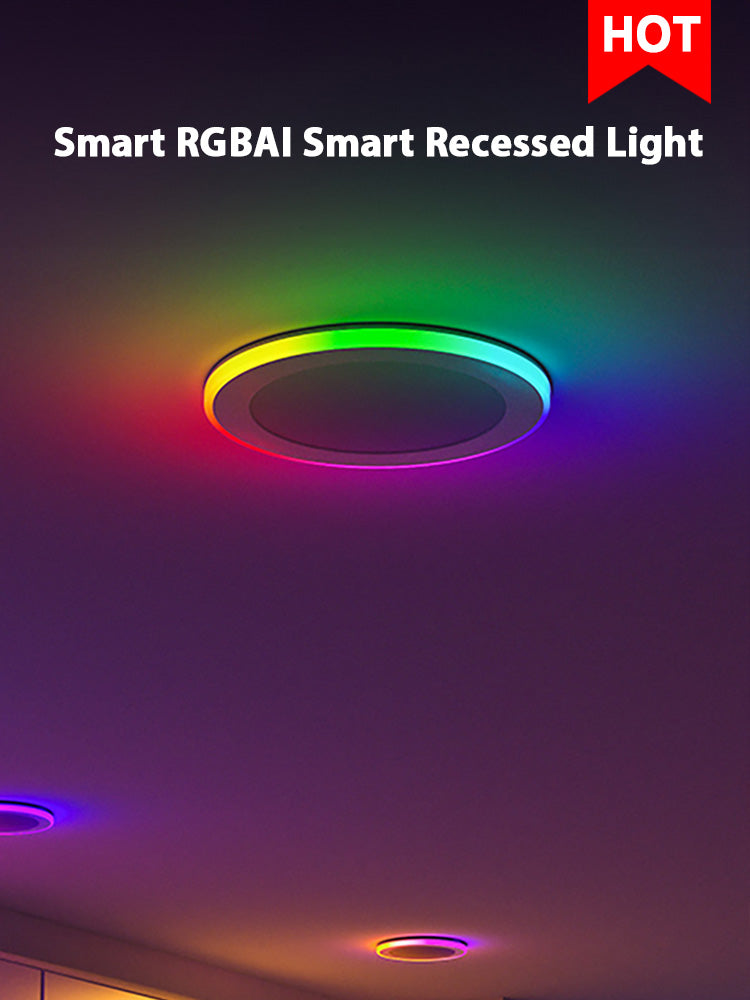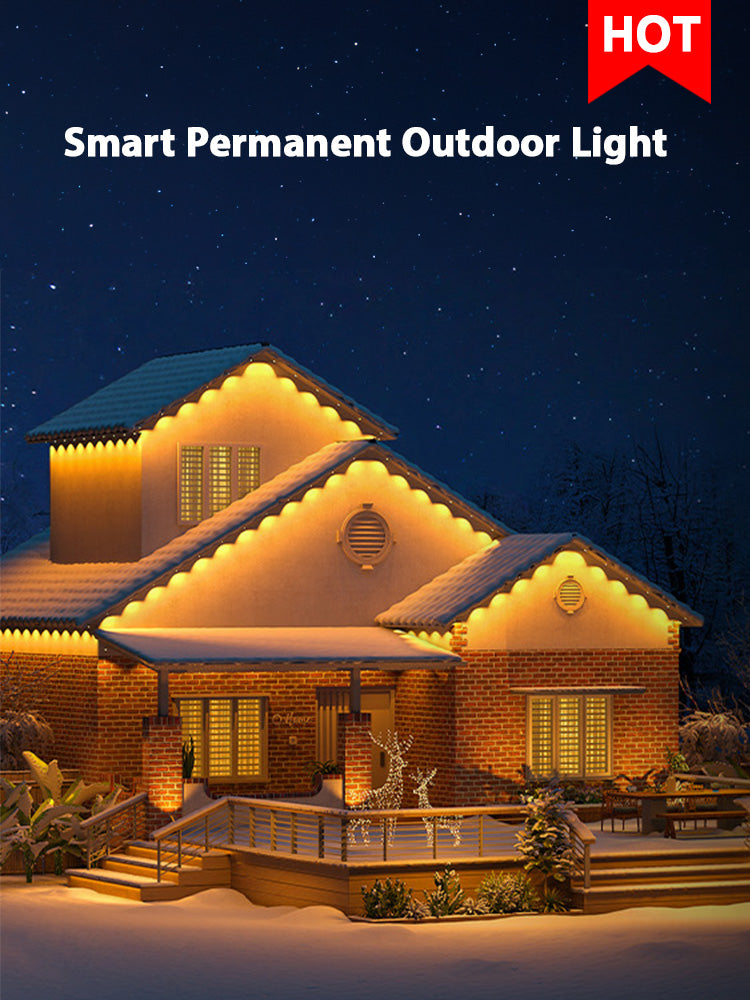Lighting does more than brighten a room—it transforms your home into a cozy, stylish retreat. Did you know that 91% of U.S. homeowners believe quality lighting is essential for home design? It’s no surprise, considering how the right indoor decorative lights can elevate your space. But choosing the perfect lights isn’t always easy. Many people make common mistakes, like relying on a single fixture or skipping task lighting in key areas. By understanding your needs and avoiding these pitfalls, you can create a warm, inviting atmosphere that reflects your personality.
Key Takeaways

-
Learn about different indoor lights like chandeliers and wall lights. Each type has a special use and adds style to your home.
-
Check your room's size and shape before picking lights. Use a simple formula to find the right brightness and avoid dark spots.
-
Mix lighting types like ambient, task, and accent lights. This mix makes your room look nice and work well for daily use.
-
Pick LED bulbs to save money and help the planet. They last longer and use less power than old-style bulbs.
-
Plan a budget for your lights. Focus on good quality so your lights last longer and work better.
Understanding Indoor Decorative Lights
What Are Indoor Decorative Lights?
Indoor decorative lights are more than just functional—they’re a way to express your style and enhance your home’s personality. These lights come in various forms, from elegant chandeliers to cozy floor lamps. Each type serves a unique purpose, whether it’s creating a focal point, adding warmth, or simply brightening up a space.
Wall sconces are lighting fixtures that are surface mounted to the wall.
Cove lighting can be incorporated into or mounted to the upper part of a ceiling or wall.
Undercabinet light fixtures are usually mounted under kitchen cabinets.
Chandeliers provide ambient light and are often suspended from the ceiling.
Vanity lights are essential for adequate lighting in bathrooms.
You’ll find options like pendant chandeliers, wall lamps, ceiling lamps, and even fairy lights. Each one offers a chance to transform your space into something special.
The Role of Decorative Lighting in Your Home
Decorative lighting does more than illuminate—it sets the mood and defines the character of your home. The right lighting can highlight architectural features, like crown molding or textured walls, making them stand out. It also enhances your color schemes, making them appear more vibrant and cohesive.
-
Ambient lighting enhances the overall look and feel of a space by highlighting architectural features and creating a cozy atmosphere.
-
The right lighting can make color schemes more vibrant, enhancing the aesthetic appeal of a home.
-
Soft light can dramatically elevate furniture and decor, adding character to a space.
Think of decorative lighting as the finishing touch that ties everything together, creating a warm and inviting environment.
Benefits of Choosing the Right Lights
When you choose the right decorative lighting, you’re not just improving your home’s appearance—you’re also boosting its functionality. Proper lighting enhances ambiance, making your space feel more comfortable and welcoming. It can also highlight unique architectural features, like vaulted ceilings or built-in shelves, adding depth and dimension to your rooms.
-
Enhances ambiance
-
Highlights architectural features
-
Creates a warm and inviting environment
By selecting the right lights, you can transform your home into a space that feels both stylish and functional.
Assessing Your Space for Decorative Lighting
Evaluating Room Size and Layout
When choosing indoor decorative lights, understanding your room’s size and layout is essential. The dimensions of your space determine how much light you need and where to place fixtures. For example, larger rooms often benefit from a mix of ceiling fixtures and wall-mounted lights to ensure even illumination. A helpful formula to calculate the total lumens required is: Room Area (in square feet) x Lumens per Square Foot = Total Lumens Required. This ensures you achieve the right brightness for your space.
Think about how your room’s layout affects light distribution. In a living room with high ceilings, relying on a single chandelier can leave corners in shadow. Adding floor lamps or wall sconces can fill those gaps and create a more inviting atmosphere. By assessing your space carefully, you can avoid uneven lighting and make your home feel cozier.
Considering Room Function and Lighting Needs
Each room in your home serves a unique purpose, and your lighting should reflect that. In a kitchen, bright task lighting is crucial for cooking and meal prep. Under-cabinet lights or recessed fixtures work well here. For a bedroom, softer lighting creates a relaxing vibe. Table lamps or dimmable ceiling lights are great options.
Ask yourself what activities happen in each room. Do you need focused light for reading or working? Or do you want ambient light for entertaining guests? Matching your lighting to the room’s function ensures both style and practicality.
Identifying Focal Points for Light Fixtures
Lighting can draw attention to the standout features of your home. Use accent lighting to highlight artwork or architectural details like exposed beams. A table lamp can define a cozy corner, while a floor lamp can create a reading nook. Here are some ideas to inspire you:
-
Highlight artwork with accent lighting.
-
Use table lamps to define spaces.
-
Create a cozy reading nook with floor lamps.
-
Draw attention to architectural details.
By identifying focal points, you can use lighting to enhance your home’s character and make each room feel more dynamic.
How to Choose the Right Lights for Your Style
Matching Decorative Lighting to Popular Styles
Modern and Minimalist
If you love clean lines and simplicity, modern and minimalist lighting is your go-to. These styles focus on sleek designs with geometric shapes and neutral tones. Think pendant lights with metallic finishes or recessed lighting that blends seamlessly into your ceiling. These fixtures create a clutter-free look while providing ample illumination. Pair them with a neutral color palette and simple furniture to complete the vibe.
Rustic and Farmhouse
Rustic and farmhouse styles bring warmth and charm to your home. Lighting in this category often features natural materials like wood and metal with a weathered finish. Picture a chandelier made of distressed wood or a lantern-style pendant light. These fixtures pair beautifully with earthy tones like browns, creams, and greens. They also work well with handcrafted furniture, adding a cozy, organic feel to your space.
Industrial and Urban
Industrial lighting is all about raw, edgy designs. Exposed bulbs, steel fixtures, and dark metal finishes define this style. You might see pendant lights with a cage design or wall sconces that mimic factory lighting. These fixtures look stunning against exposed brick walls or concrete floors. Industrial lighting works best in spaces with high ceilings and large windows, creating a bold, urban aesthetic.
Traditional and Classic
For a timeless look, traditional and classic lighting is the way to go. Chandeliers with intricate details, table lamps with fabric shades, and wall sconces with ornate designs fit perfectly in this style. These fixtures often feature warm finishes like brass or bronze. They add elegance and sophistication, making them ideal for formal living rooms or dining areas.
Blending Light Fixtures with Existing Décor
To create a cohesive look, your lighting should complement your existing décor. Start by considering your room’s color scheme. Brightly colored fixtures can add a pop of personality if they match your palette. Layering different types of lighting—ambient, task, and accent—helps balance the overall look. For example, a polished nickel pendant in the kitchen can tie in with a chandelier in the dining room, even if the materials differ. Strategically placing fixtures ensures your space feels harmonious and well-lit.
Using Lighting to Make a Statement
Lighting isn’t just functional—it’s a chance to showcase your style. Statement pieces like chandeliers, sculptural lamps, or oversized pendants can become the focal point of a room. Imagine a starburst chandelier in your living room or a bold floor lamp in a reading nook. These fixtures not only light up your space but also elevate its design. Whether you choose a modern pendant or a rustic lantern, statement lighting adds character and flair to your home.
Selecting the Best Light Fixtures
Types of Light Fixtures
Choosing the right light fixtures can transform your space into something extraordinary. Here are some common types to consider:
-
Chandeliers: These decorative fixtures add elegance and provide ambient lighting. They work beautifully in dining rooms or entryways, creating a stunning focal point.
-
Pendants: Suspended from the ceiling, pendants offer both task and ambient lighting. They’re perfect for kitchen islands or dining tables.
-
Wall Sconces: Mounted on walls, sconces direct light up or down. They’re great for adding ambient light or creating decorative effects.
-
Recessed Lights: Installed above the ceiling, these fixtures provide subtle and modern lighting. They’re ideal for living rooms or hallways.
-
Table and Desk Lamps: These portable fixtures are excellent for task lighting in bedrooms or home offices.
Each type serves a unique purpose, so mix and match to suit your needs and style.
Balancing Size, Scale, and Proportion
When selecting light fixtures, size matters. A fixture that’s too large can overwhelm a room, while one that’s too small might go unnoticed. To find the right balance, consider the dimensions of your space. For example, in a small dining room, a medium-sized chandelier works better than an oversized one.
Think about the height of your ceilings too. Low ceilings benefit from flush-mounted fixtures, while high ceilings can accommodate larger chandeliers or pendants. Always aim for proportion. A well-balanced fixture complements your room without overpowering it.
Materials and Finishes to Complement Your Home
The materials and finishes of your light fixtures should harmonize with your home’s décor. Natural materials like wood add warmth and texture, making them perfect for rustic or farmhouse styles. Metal finishes like brass, copper, or stainless steel bring a sleek, modern touch.
Glass shades are another popular choice. They diffuse light beautifully and pair well with LED technology for energy efficiency. Whether you prefer a polished or matte finish, choose materials that enhance your space and reflect your personal style.
Light Bulbs and Color Temperature Basics

Types of Light Bulbs
When it comes to choosing light bulbs, you’ve got three main options: LED, incandescent, and CFL. Each has its own strengths and weaknesses, so understanding them can help you make the best choice for your home.
-
Incandescent Bulbs: These are the traditional bulbs you might be familiar with. They’re inexpensive upfront but cost about $90 to operate over 10 years. They also emit a lot of heat and have a short lifespan of just 750–1,200 hours.
-
CFL Bulbs: Compact fluorescent lamps (CFLs) are more energy-efficient than incandescent bulbs. They cost around $18 to operate over 10 years and last up to 10,000 hours. However, they contain a small amount of mercury, which requires careful disposal.
-
LED Bulbs: LEDs are the most energy-efficient and long-lasting option. They cost about $18 to operate over 10 years and can last over 25,000 hours. Plus, they emit very little heat and are environmentally friendly.
Here’s a quick comparison to help you decide:
|
Feature |
Incandescent |
CFL |
LED |
|---|---|---|---|
|
Brightness (lumens/watt) |
16 |
70 |
89 |
|
Lifespan (hours) |
750–1,200 |
Up to 10,000 |
Over 25,000 |
|
Annual Cost to Run |
$3.00 |
$1.70 |
$1.30 |
|
Heat Emission |
High |
Medium |
Low |
Understanding Color Temperature
Color temperature plays a big role in how a room feels. It’s measured in Kelvin (K) and ranges from warm to cool tones.
Warm White vs. Cool White
Warm light (2,700K–3,000K) creates a cozy and relaxing atmosphere. It’s perfect for spaces like bedrooms and living rooms where you want to unwind. On the other hand, cool light (3,000K–5,000K) feels crisp and energizing. It works well in kitchens, home offices, or any area where focus and productivity are key.
Choosing the Right Temperature for Each Room
Think about how you use each room. For a bedroom, warm white light can help you relax after a long day. In contrast, a kitchen benefits from cooler light to keep you alert while cooking. Balancing the color temperature in your home ensures every space feels just right.
Energy Efficiency and Longevity of Bulbs
Switching to energy-efficient bulbs like LEDs can save you money and reduce your environmental impact. Here’s why:
-
LED bulbs last an average of 25,000 hours, meaning you might only replace them every 15 years.
-
They use up to one-sixth of the energy required by incandescent bulbs, making them incredibly efficient.
-
Over their lifetime, LEDs can save you about $81.68 compared to traditional bulbs.
By choosing energy-efficient lighting, you’re not just saving money—you’re also making a sustainable choice for the planet.
Layering Decorative Lighting in Your Home
Layering your lighting is the secret to creating a well-lit, inviting home. By combining different layers of light, you can balance functionality with style while enhancing the mood of your space. Let’s explore how ambient, task, and accent lighting work together to transform your home.
Ambient Lighting for Overall Illumination
Ambient lighting is the foundation of any room’s lighting design. It provides overall illumination, replacing natural light when the sun goes down. This type of lighting ensures your space feels comfortable and functional, eliminating harsh shadows and making it easy to navigate.
"Ambient light is like a warm handshake when you come into the room. Its purpose is to light up the room, but it's more than that. It's to help your eye focus on specific areas—the artwork in the hallway, the bookcase by the fireplace, the table lamp on the nightstand to help you find your book." - Mary Jo Major
Think of ambient lighting as the base layer of light that ties everything together. Ceiling fixtures like chandeliers, recessed lights, or flush mounts are common choices. These lights create a soft, even glow that bridges the beauty of your décor with the practicality of lighting your space.
Task Lighting for Focused Activities
Task lighting is all about functionality. It provides focused light for specific activities like reading, cooking, or working. Without it, you might find yourself straining your eyes or struggling to complete tasks efficiently.
Here are some great task lighting solutions:
-
Lamps for desks, bedrooms, or craft tables.
-
Cabinet lighting for kitchen countertops or workspaces.
-
Pendant lights for kitchen islands or dining tables.
-
Wall-mounted fixtures for versatile, space-saving options.
By adding task lighting to your home, you can create dedicated zones for productivity while enhancing the overall lighting design.
Accent Lighting to Highlight Features
Accent lighting adds the finishing touch to your lighting design. It highlights architectural features, artwork, or other focal points, creating depth and visual interest. This layer of light draws attention to the unique elements of your home.
Use accent lighting to:
-
Highlight arches, columns, or textured walls.
-
Create contrast that makes architectural details stand out.
-
Showcase artwork or decorative pieces as focal points.
-
Add a glow that enhances the room’s aesthetic.
Accent lighting doesn’t just illuminate—it personalizes your space, making it feel dynamic and stylish. Combine it with ambient and task lighting for a perfectly balanced look.
Combining Layers for a Balanced Look
Layering your lighting is the secret to creating a room that feels both functional and inviting. By combining ambient, task, and accent lighting, you can achieve a balanced atmosphere that works for any occasion. Each layer plays a unique role, and when used together, they transform your space into something extraordinary.
Start with ambient lighting as your base. This layer provides overall illumination, ensuring the room feels bright and welcoming. Ceiling fixtures like chandeliers or recessed lights work well here. They spread light evenly, making it easy to move around and enjoy the space.
Next, add task lighting to focus on specific areas. Think about the activities you do in the room. Do you need light for reading, cooking, or working? Desk lamps, under-cabinet lights, or pendant fixtures can provide the focused light you need. Task lighting enhances functionality and makes everyday tasks easier.
Finally, use accent lighting to highlight your room’s best features. This layer adds depth and personality. You can use it to draw attention to artwork, architectural details, or decorative pieces. Wall sconces, LED strips, or spotlights are great options for creating these eye-catching effects.
To combine these layers effectively, consider the room’s purpose and layout. Strategically place fixtures to ensure each layer complements the others. For example, a living room might have a chandelier for ambient light, a floor lamp for reading, and accent lights to showcase a gallery wall. This approach creates a cohesive and visually appealing design.
By layering your lighting thoughtfully, you can create a space that’s not only beautiful but also practical. It’s all about finding the right balance to suit your needs and style.
Placement and Installation Tips for Indoor Decorative Lights
Living Room Lighting Ideas
Your living room is the heart of your home, so its lighting should feel warm and inviting. Start by maximizing natural light during the day. Place a large mirror across from a window to reflect sunlight and brighten the space. For evenings, layer your lighting to create a cozy ambiance. Use LED lights for a modern touch or candles for a soft, ambient glow.
Want to add a unique flair? Incorporate lighted wall art to subtly enhance your décor. Accent lighting can also highlight architectural features or artwork. If you’re aiming for a more open feel, consider using recessed lights or a statement chandelier as your centerpiece. These ideas will help you create a living room that’s both functional and stylish.
Bedroom Lighting Tips
Bedroom lighting should prioritize relaxation and comfort. Avoid relying on a single overhead source. Instead, layer your lighting with ambient, task, and accent options. Dimmable lights are a great choice, letting you adjust brightness levels to suit your mood.
Distribute light sources evenly to prevent harsh contrasts. Position fixtures thoughtfully to minimize glare, especially near the bed. For a cozy atmosphere, use bedside lamps or wall-mounted sconces. These provide focused light for reading while maintaining a soothing environment. By tailoring your bedroom lighting to your needs, you’ll create a space that feels like a personal retreat.
Kitchen and Dining Room Lighting Suggestions
In kitchens and dining rooms, lighting serves both functional and aesthetic purposes. Pendant chandeliers work beautifully over dining tables or kitchen islands, offering focused illumination. Wall lamps are perfect for tight spaces, adding charm while saving room. Ceiling lamps provide a clean, versatile design that works well in larger areas.
For added flair, use floor lamps to brighten specific corners or create a reading nook. Thoughtful lighting placement can transform these rooms into spaces where you’ll love spending time, whether you’re cooking, dining, or entertaining.
Hallway and Entryway Lighting Advice
Your hallway and entryway are the first spaces guests see when they enter your home. The right lighting can make these areas feel welcoming and stylish. Here’s how you can brighten up these often-overlooked spaces.
1. Choose Fixtures That Fit the Space
Hallways and entryways come in all shapes and sizes. For narrow hallways, recessed lights or flush-mounted ceiling fixtures work best. They provide even illumination without taking up space. If your entryway has high ceilings, a statement chandelier or pendant light can add a touch of elegance.
Tip: Use fixtures that match your home’s style. A sleek, modern pendant works well in contemporary spaces, while a rustic lantern adds charm to farmhouse-style homes.
2. Add Layers of Light
Don’t rely on a single light source. Combine ambient lighting with accent lights to create depth. Wall sconces can add a soft glow and highlight artwork or mirrors. Table lamps on a console table can also enhance the ambiance.
3. Use Lighting to Guide the Way
Hallways often serve as pathways between rooms. Use lighting to guide the flow. Install a row of recessed lights or track lighting to create a clear path. For a dramatic effect, consider LED strip lights along the baseboards or under a floating shelf.
4. Highlight Key Features
Entryways often have standout features like a mirror, artwork, or a decorative table. Use accent lighting to draw attention to these elements. A small spotlight or a pair of sconces can make these features pop.
Note: Mirrors not only reflect light but also make small spaces feel larger. Pair a mirror with a light source for maximum impact.
5. Choose Warm, Inviting Light
Harsh lighting can feel unwelcoming. Opt for warm white bulbs (around 2700K) to create a cozy atmosphere. Dimmable lights are a great option, letting you adjust the brightness based on the time of day or occasion.
By following these tips, you can transform your hallway and entryway into spaces that feel both functional and inviting. After all, first impressions matter!
Smart Lighting Options for Modern Homes
Features of Smart Decorative Lighting
Smart decorative lighting offers a blend of style and convenience that’s perfect for modern homes. These lights come packed with features that make your life easier while enhancing your space. Here’s what you can expect:
-
Energy Efficiency: Most smart lights use LED technology, which consumes far less energy than traditional bulbs. Many also include timers and motion sensors to help you save electricity.
-
Effortless Control: You can adjust your lights using apps or voice assistants like Alexa or Google Assistant. No need to get up—just say the word or tap your phone.
-
Enhanced Security: Smart lights let you control them remotely, even when you’re not at home. This creates the illusion that someone’s there, which can deter intruders.
-
Mood Customization: Whether you’re relaxing, working, or hosting a party, you can tweak the brightness and color to match the vibe.
These features make smart lighting a practical and stylish choice for any room in your home.
Benefits of Smart Lights for Your Home
Smart lights don’t just look good—they’re also incredibly functional. Here’s how they can make your life better:
|
Feature |
Description |
|---|---|
|
Energy Consumption |
Smart LED bulbs use at least 75% less energy than incandescent bulbs. |
|
Lifespan |
Smart bulbs last 15,000-50,000 hours compared to 750-2,000 hours for incandescent bulbs. |
|
Automation |
You can schedule lights to turn on/off, reducing unnecessary energy usage. |
|
Remote Control |
Turn off lights remotely to avoid wasting energy when you’re away. |
|
Motion Sensors |
Lights activate based on movement, ensuring they’re only on when needed. |
|
Energy Tracking |
Some smart bulbs track energy usage, helping you find ways to save even more. |
With these benefits, smart lighting not only saves you money but also adds convenience and security to your home.
Lumary Smart Gimbal Recessed Lights: A Versatile Option
If you’re looking for a versatile smart lighting solution, the Lumary Smart Gimbal Recessed Lights are a fantastic choice. These lights offer adjustable and directional illumination, making them ideal for any room. You can tilt and rotate them to focus light exactly where you need it, whether it’s for task lighting in the kitchen or accent lighting to highlight artwork.
The Lumary lights connect seamlessly to the Lumary app and voice assistants, giving you full control over brightness, color, and scheduling. They’re energy-efficient too, thanks to their LED technology, which helps lower electricity costs. Plus, their sleek design fits beautifully into modern spaces, adding both style and functionality.
These lights are perfect for creating a cozy atmosphere, enhancing productivity, or setting the mood for a celebration. Their adaptability makes them a must-have for anyone looking to upgrade their home lighting.
Budgeting for Decorative Lighting
Setting a Realistic Budget
When it comes to budgeting for decorative lighting, the first step is setting a realistic budget. Think about how much you’re willing to spend without stretching your finances. Start by listing the rooms you want to light up and the type of fixtures you need. For example, a chandelier for the dining room might cost more than a table lamp for the bedroom. Prioritize your needs and allocate funds accordingly.
It’s also smart to consider long-term savings. While some fixtures or bulbs might seem pricey upfront, they can save you money over time. LED bulbs, for instance, use less energy and last much longer than traditional options. By planning ahead, you can strike a balance between affordability and quality.
Balancing Quality and Cost
Finding the sweet spot between quality and cost is key. Cheap fixtures might save you money now, but they often wear out quickly or don’t perform well. On the other hand, high-end options can be unnecessarily expensive. Look for durable materials and reliable brands that fit your budget. Investing in quality ensures your lighting lasts longer and performs better.
Think about the purpose of each light. For high-use areas like the kitchen, it’s worth spending a bit more on durable fixtures. For decorative pieces in less-used spaces, you can opt for more affordable options. This way, you get the best value for your money without compromising on style or function.
Tips for Finding Affordable Light Fixtures
You don’t have to break the bank to find stylish lighting. Here are some tips to help you stay within your budget:
-
Set a clear budget before shopping to avoid overspending.
-
Compare the initial cost of fixtures with potential long-term savings, like energy-efficient LED bulbs.
-
Look for sales, discounts, or clearance items at local stores or online.
-
Consider DIY projects to customize affordable fixtures and make them unique.
-
Explore options like wall sconces that don’t require hardwiring, saving on installation costs.
If you’re new to lighting, take some time to educate yourself. Learn about the three layers of lighting—ambient, task, and accent—and how they work together. Familiarizing yourself with bulb types and terms can also help you make smarter choices. With a little research and creativity, you can find beautiful lighting solutions that fit your home and budget.
Choosing the best indoor decorative lights doesn’t have to feel overwhelming. Start by understanding your space and style. Think about what lighting works best for your needs. Layering different types of light can make your home feel cozy and functional. Don’t forget to explore smart options like Lumary Smart Gimbal Recessed Lights for added convenience and versatility. With these tips, you can create a beautifully lit home that reflects your personality and feels just right for you.
FAQ
What are the most popular types of decorative lighting?
The most popular types of decorative lighting include chandeliers, pendants, wall sconces, and recessed lights. Each type serves a unique purpose, from creating ambiance to highlighting decor. Choose fixtures that match your style and lighting plan to enhance your space.
How do I create a balanced lighting plan for my home?
Start with ambient lighting for overall illumination. Add task lighting for specific activities like reading or cooking. Use accent lighting to highlight decor or architectural features. Combining these layers ensures your lighting fixtures create a cohesive and functional design.
Can I mix different lighting fixtures in one room?
Yes, mixing lighting fixtures adds depth and character to your space. Combine pendants, wall sconces, and table lamps to create layers. Just ensure the fixtures complement your decor and lighting plan for a harmonious look.
How do I choose the right size light fixtures?
Consider your room’s size and ceiling height. For a dining table, the fixture should be about one-third the table’s width. In larger rooms, use multiple fixtures like pendants or chandeliers to ensure even lighting.
What’s the best way to highlight my home’s decor with lighting?
Use accent lighting to draw attention to artwork, textured walls, or unique furniture. Recessed lights or wall-mounted fixtures work well for this. A thoughtful lighting plan can make your decor stand out while enhancing the room’s ambiance.

